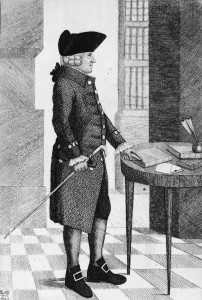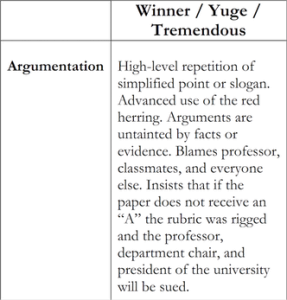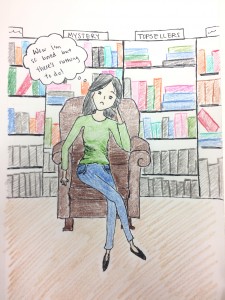December 11, 2016 at 9:48 pm
As our understanding of Artificial Intelligence and its relation to our own intelligence is slowly becoming illuminated, one cannot help but to speculate whether machines of the future will be able to replace our role in certain activities. And some feel immediately slighted when such functions are also one’s dearly cherished. Many of these involve literature: reading, creating, and criticizing. Inderjeet Mani at Aeon ponders how algorithms are able to perform certain functions of the critic, such as identifying similarities among different characters in literature, within a fraction of the time it would otherwise take:
The computational linguist David Bamman, now at the University of California, Berkeley, and colleagues, mined a database of more than 15,000 novels to produce a Bayesian statistical model that could predict different character types. They used features such as the actions that a person participates in, the objects they possess, and their attributes. The system was able to identify cases where two characters by the same author happen to be more similar to each other than to a closely related character by a different author. So the system discovered that Wickham in Jane Austens Pride and Prejudice (1813) resembles Willoughby in her Sense and Sensibility (1811),more than either character resembles Mr Rochester in Charlotte Bronts Jane Eyre (1847).
Many of us are of course bristled in protest, yet Mani honorably concedes that the critic serve a much more wide-ranging function than can be dreamt of in the algorithm of such a machine. He labors, however, that computers have shown the rudiments of something which critics would be doing a disservice to their own scholarship by overlooking.
Read his full post at Aeon
By Kush Ganatra
|
Posted in Uncategorized
|
December 10, 2016 at 5:59 pm
Nicholas Dames at The Nation reviews three books that attempt to vindicate the practice of literary criticism. One of the most salient ways in which all three have done so is by laboring howcriticism opens the sensibilities of its readers to more valuably appreciate works of art that wouldotherwise have been abstruse or mysterious. What, Dames alarmingly asks, is the role of the critic in an age that appreciates him or her apparently less than ones before them.

Lionel Trilling. (Bettman). Image for The Nation.
But where can one find a good enough teller these days? What venues can play host to a critical sensibility that is both distinctive and imitable? What institutions can afford to supply the cultural critic with a steady income and a stable intellectual home? These are embarrassing questions to ask. It is unlikely that such a figure would emerge today from print journalism, as the walls close in on the handful of venues that still bother with criticism at all. It is even less likely that the Internet, each corner of which is constantly undergoing mitosis, can nurture a voice with the necessary kind of consistency and economic stability. Least likely of all is the university, which is presently too engaged in a struggle for legitimacy to speak for a public. Suggest any one of these sites and you can hear the laughter in advance. Too commercial, too hurried, too rarefiedand all of it too partial: Any setting that might give the critic a connection to genuine, generalizable experience is virtually out of reach.
Is is in part these questions that the three authors whose books are themselves undergoing criticism, which the triad set out to answer. We learn throughout that the critic who is likened often to the artisan rather than artist is part of an historical enterprise that is much more imaginative than commonly supposed. But that criticism itself might be suffering from the bias that comes from any partisan. But we can at least have solace in its not being propaganda, since that is a kind of art that criticism has failed either to live up or down to, depending on your view.
Read his full post at The Nation
By Kush Ganatra
|
Posted in Great Books, Great Ideas, Great Personalities
|
Tagged criticism, lionel trilling
|
December 9, 2016 at 11:43 am
Hellooo, scholars! Can you believe that the last full week of classes of the semester is coming to a close? We hope your papers, projects, and exams go swimmingly.
- In an art show organized by the Pontifical Council for Promoting Christian Unity and the Swedish Embassy, the Vatican will display works by Rembrandt for the first time on the 500th anniversary of the Protestant Reformation. Closes February 26.
- The Confucian Culture Center Houston, a project of the non-profit International Confucian Ecological Alliance (ICEA), celebrated its opening ceremony with the dedication of a jade sculpture of Confucius last Saturday. There are plans to build an accompanying Confucian Temple in the future.
- Actors Shakespeare Project is presenting a minimalist version of Shakespeare's The Tempest in Willet Hall at United Parish in nearby Brookline. See it before its close on January 8.

Lydia Barnett-Mulligan (Miranda) and Kai Tshikosi (Ferdinand). (Photo: Nile Scott Shots/Actors' Shakespeare Project)
- Clinton Church Restoration will soon buy a church that W.E.B. Du Bois once attended, the Clinton African Methodist Episcopal Zion Church, located in Great Barrington, Massachusetts. After the purchase, the future non-profit hopes to preserve the 1857 church.
- Did you notice the reference to the Sistine Chapel in the season finale of Westworld? Did you also start screaming because you learned all about it in Core? Did you ALSO know that there is controversy regarding whether "God is more than a flying brain"? READ MORE.

Brain? Cloak? You be the judge.
Bonus:
- Our very own Prof. Kyna Hamill delves into the history of "Jingle Bells," and it turns out that the song originates from a blackface minstrel performance.
That's a wrap, Corelings. Until next time, good luck in your studies, and shoot us an email at core@bu.edu should you find any news of interest!
By cdossett
|
Posted in Art, Friday Fun, In the News
|
Tagged weekly links
|
December 6, 2016 at 5:06 pm
And in posing this question Professor Molly Worthen argues dyspeptically in her latest article for why more liberals should be attending 'Great Books Camp.' A careful study into the history of one's own ideas, Dr. Worthen suggests, would allow us to put not only Donald Trump in perspective, but more generally to engage with conservatives instead of automatically gainsaying anything that smells of them. Over the course of her article Dr. Worthen manages while firing in all directions to implicate liberals, conservatives, and

'Universal History Archive/Getty Images.' Image for The New York Times
The hyperspecialized, careerist ethos of mainstream universities has served them just as poorly as it has conservatives.
If the Trump administration does what Mr. Trump has promised to do, it will smash conservative orthodoxies like free trade and the evils of government spending. It will embrace primitive nationalism over humanitarian ethics. Its enemies, conservative and liberal, will find themselves having to make principled cases for positions they thought were settled long ago.
As remedy, liberals should emulate conservative turnstiles that seek to indoctrinate the their students in the history of ideas that they will come to discover are their own.
There is another insight here: the power of teaching the canon. Most of these programs conceive of the canon far too narrowly, but the canon is an elite debating society that anyone can join. It shows students that the struggle for freedom and justice began long before the 1960s, and that this deep history lurks beneath todays policy debates.
...
Instead of mocking conservatives ideological echo chambers and self-regarding fantasies, progressives should learn from them. For one thing, higher education should include a bit of self-regarding fantasy. It allows 20-year-olds to turn off their phones, try on the ideas of civilizations greatest minds, and practice interacting as adults.
But
Unfortunately, at most universities, studying political philosophy has become a form of countercultural rebellion, a discipline marginalized by courses in supposedly practical subjects like business and communications. Campus activists may learn organizing strategies and the argot of identity politics, but few study the history of their own ideas.
One problem here is the absence of any recommendation that students also engage with the history of ideas not supposedly their own. The conservative think tanks and programs that Professor Worthen offers for our admiration are not engaged in the benign business of promoting values associated with free-thinking and intellectual humility, but one which seek to build ideological stalwarts not courteously compromising but obstinately resistant.
Read her full post at The New York Times
By Kush Ganatra
|
Posted in Academics, Great Books
|
Tagged activism, conservatives, great books, liberals
|
December 3, 2016 at 11:07 pm
If Yeats said that 'Words alone are certain good' then we may suppose that anything that strives to go beyond them must be doing something better. At a time when money is more and more coming to serve as the universal currency, the one of our language seems to be depreciating in value. Beyond Words has then in timely fashion sought to go some distance in reversing this by reversing time: highlights of some of the most notable manuscripts in the area have been magnificently curated and illuminated for our viewing pleasure:
The exhibition presents more than 260 outstanding manuscripts and printed books from nineteen Boston-area collections, dating from the ninth to the seventeenth centuries. The exhibit is supplemented by an extensive catalog, a three-day symposium, and public programming. Explore the website for additional information on Beyond Words.
Furthermore:
In addition to focusing on the Middle Ages and Renaissance, Beyond Words also presents an opportunity to examine the history of collecting in Boston. Among the first medieval manuscripts to reach American shores can be found in Boston collections and elsewhere in New England. Famous American art-lovers such as Isabella Stewart Gardner, Charles Sumner, Charles Eliot Norton, Denman Waldo Ross and Bernard Berenson played significant roles in shaping local book collections, as did foreigners such as Sir Sydney Cockerell. To chart these collectors activities is to map an important chapter in the history of American taste and cultural ambition.
Ifformer patrons are in our present time too busied with accumulating monied capital while eschewing the arts, then artists and ancestors alike may feel a little less dismayed in knowing that at least our universities have assumed their mantle. Speaking of which, the exhibition has on display many manuscripts of the Bible.
Learn more at Beyond Words
By Kush Ganatra
|
Posted in In the News
|
November 27, 2016 at 4:02 pm
Dr. Daveena Tauber at McSweeney's has found it necessary in light of the new darkness inaugurated by our jurassic president to revise her paper grading rubric. She wants to make America grade again, Trump's way. Now, the class clown will now find himself valedictorian.If it could make Trump president and give success to all of those students coming out of Trump university, then it may certainly help you in getting an A. But wait. There are only three grades: Winner, Meh, and Loser, and three criteria. What constitutes a winner argument, Dr. Tauber?

Oh so you can get an A! But of course we should all strive for a B: Bigly. C,D,F...P? Pardon my language.
Find out more about your next assignment at McSweeneys
By Kush Ganatra
|
Posted in Great Ideas, Uncategorized
|
Tagged Donald Trump, rubric
|
November 25, 2016 at 2:45 pm
("Read it and Weep" might not have been the best entry into one's column). As all of you probably know, our world has experienced a tragedy recently, and some of us are still finding it difficult to recover from the sounding of the death-knell: Bob Dylan has been awarded the Nobel Prize for Literature: Literature? Isn't he a folk singer? Music? What does that have to do with words? In the windy city of Chicago these answers are apparently blowin' in the wind. For some of the confused frustration was voiced recently in a column for The Chicago Maroon, a shade darker from Crimson.

Peng-Peng Liu. Image for the Chicago Maroon.
Put aside for a minute the arrogance of a committee that demands praise for bestowing book awards on musicians. Put aside the fact that Nobel Committee ended a 25-year streak of not acknowledging American authors to honor Bob Dylan, of all people. After all, the slight isnt exactly new: Mark Twain, Henry James, Don DeLillo, Thomas Pynchon, John Updike, David Foster Wallace, and Kurt Vonnegut are just a few American giants snubbed by the Nobel committee. It would appear as though the Nobel Prize for Literature generally acknowledges excellence by ignoring it.
What really boggles the mind is how unsurprised we all are by the Dylan fiasco. Shouldnt we be more shocked? Shouldnt we care? Does anyone worry about the future of readingor is fretting over it now sort of like slapping a band-aid on a cold corpse?
Maybe Dylan is indeed a worthy recipient of such a prize in an era in which pleasure readers sometimes seem like members of an endangered species. Even here, at an elite university, pleasure reading is a chimera. Who has the time to read for fun? Ask students the last great book they read of their own volition, and youre likely to discover that theyhavent, not since high school. Ask students what their favorite novels are, and youre bound to assemble the standard curriculum of AP English. These books certainly belong in the pantheon of great literature, but it reflects a certain lack of intellectual curiosity that students only read novels when forced. But you probably shouldnt bother with these questions at all. Conversations about pleasure reading usually end with both parties feeling guilty and depressed.
Yet while putting aside all those considerations the author might also be pushing aside others that must valuably feature in any serious conversation about Dylan's art: there's one more reason to be guilty during conversations about reading for pleasure. For many of the great artists were in their time read for both pleasure and study. And many of these have touched us with their art in mediums other than words. Shakespeare, for example, wrote plays. Yet these are not brusqued aside as undeserving of literary study. When considering the art of musicians, then, we should be careful to assess each of these mediums on its own merits, while being careful to watch that our judgment of the art as a whole not be monopolized by the criteria of any particular one. That is, we must not let the fact that Dylan was an extraordinarily gifted musician blind us to the one that (though it might be hard to believe for those who are trying to avenge their favorite authors) the committee was able to see: first, that music uses words, and second, that in the case of Dylan, these were of tremendous imaginative power.
Read the full post at The Chicago Maroon
By Kush Ganatra
|
Posted in Art, Great Ideas, Great Questions
|
Tagged Bob Dylan, Nobel Prize
|










